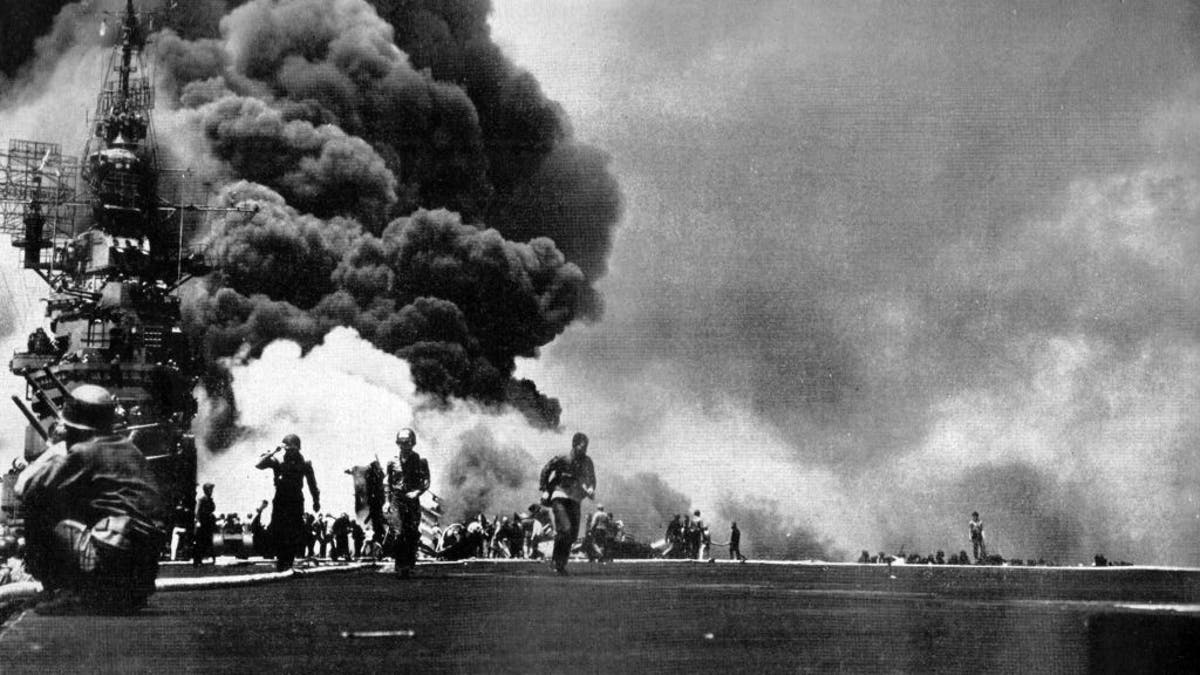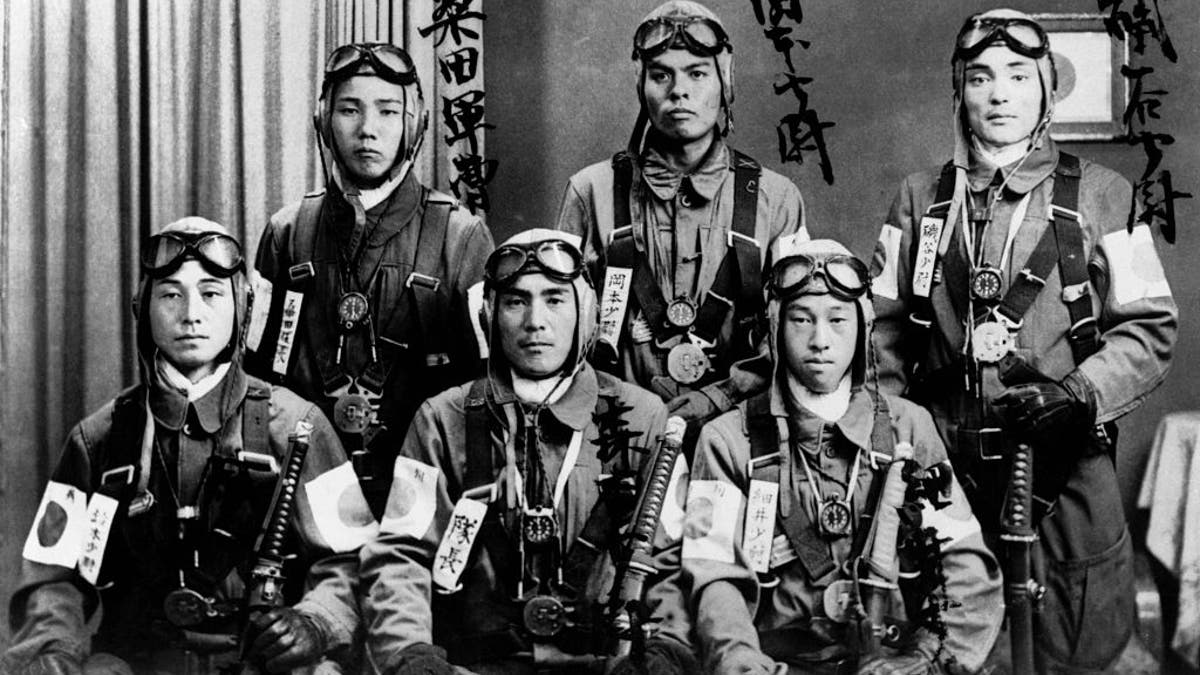American boatbuilder Andrew Jackson Higgins is 'the man who won' World War II – here’s his victorious story
Andrew Jackson Higgins built shallow-draft boats in New Orleans for Delta oilmen and trappers in the 1930s; his military-grade version fueled America’s unstoppable amphibious attacks across the globe in World War II, from Normandy to Iwo Jima.
Kamikaze suicide planes sent by desperate Imperial Japan screamed down from the skies over Surigao Strait in the Philippines, terrifying American sailors, for the first time on this day in history, Oct. 25, 1944.
"The Americans who witnessed these first kamikaze attacks were horrified and shaken, but it was only the beginning," historian James P. Duffy wrote last year for American Heritage magazine, in a passage adapted from his recent book, "Return to Victory."
By the end of World War II in the summer of 1945, about 130 American warships were sunk or damaged by kamikazes, according to several military history sources.
As many as 3,000 U.S. servicemen and women were killed, with thousands more wounded, in the suicide attacks.
About 5,000 Japanese kamikaze pilots killed themselves, according to an estimate by the National Air and Space Museum.

Photograph of the USS Bunker Hill taking two kamikazes, dated 1945. (Photo 12/Universal Images Group via Getty Images)
The escort carrier USS St. Lo was the first ship targeted by a squadron of about half a dozen kamikazes.
The Japanese Zero fighter planes were stripped down of normal equipment and packed with over 500 pounds of explosives.
REDDIT COMMUNITY RESPONDS TO ‘BEST THINGS ABOUT AMERICA’ QUERY: ‘GOD BLESS TEDDY ROOSEVELT’
"The damage from the attack was so severe that the St. Lo sank in just 30 minutes," reported the National World War II Museum.
"Out of 889 crewmen aboard, 134 lost their lives in the first kamikaze attack of World War II."
St. Lo survivor Orville Bethard told the museum that the frenzied Japanese suicide planes screamed at full throttle, at speeds of over 300 miles per hour.
"The Americans who witnessed these first kamikaze attacks were horrified and shaken." — James P. Duffy
Kamikazes also struck American escort carriers USS Kalinin Bay, USS Kitkun Bay, USS Santee, USS Suwannee and USS White Plains, according to the Naval History and Heritage Command website; the attacks killed nearly 300 American sailors and wounded hundreds more in those first horrifying suicide attacks on Oct. 25 alone.

Determination and pride show in the faces of these young Japanese pilots trained as kamikaze flyers. The suicide pilots crashed planes loaded down with explosives, extra fuel and special missiles into enemy ships. Kamikaze, "Divine Wind," refers to a typhoon that swept Mongol invaders away from the Japanese coast in the 13th century. (Photo by © Hulton-Deutsch Collection/CORBIS/Corbis via Getty Images)
The name kamikaze is translated to "divine wind." It's a historical reference in Japan to a typhoon that suddenly destroyed a Mongol fleet in the 13th century and saved the island nation from invasion.
"The fanatical resolve of Japanese pilots turned their aircraft into human guided missiles," reported the Naval History and Heritage Command.
"While these results did not prevent Japan’s defeat in the Philippines, they exceeded considerably what the Japanese achieved with orthodox air tactics alone. This guaranteed the greater use of kamikazes going forward."
"The fanatical resolve of Japanese pilots turned their aircraft into human guided missiles."
The Japanese coincidentally launched the suicide attacks on St. Crispin’s Day — a landmark anniversary in the history of global warfare.
King Henry V led English archers into the famous Battle of Agincourt on Oct. 25, 1415.

USS St Lo (CVE-63) burns after it's hit by Japanese suicide plane, Leyte Gulf, Phillipines. Close observation shows men going over the side, Oct. 25, 1944. (Photo by © CORBIS/Corbis via Getty Images)
His inspirational St. Crispin’s Day speech before England's shocking victory over France was immortalized in literature by William Shakespeare in "Henry V."
"From this day to the ending of the world / But we in it shall be remembered / We few, we happy few, we band of brothers," Henry V said in Shakespeare's account, while rallying his troops to battle.
CLICK HERE TO GET THE FOX NEWS APP
The phrase "band of brothers" connotes comrades in arms today. It became the title of historian Stephen Ambrose’s 1992 history of the U.S. Army’s 101st Airborne in World War II and the 2001 made-for-TV epic World War II series "Band of Brothers" that the book inspired.
The British cavalry’s "Charge of the Light Brigade," famously dramatized by poet Alfred Lord Tennyson, took place on St. Crispin’s Day, Oct. 25, 1854, during the Crimean War.

King Henry V (1387-1422, left) defends his brother against the French at the Battle of Agincourt during the Hundred Years War, Oct. 25, 1415. The English army defeated the French army. (Hulton Archive/Getty Images)
"Theirs not to reason why. Theirs but to do and die," Tennyson wrote of the hopeless and ill-fated attack.
The city of Lisbon was recaptured from Islamic forces by an international army of German, British, Flemish and Portuguese Christians during the Second Crusade on Oct. 25, 1147.
For more Lifestyle articles, visit www.foxnews.com/lifestyle
The victory had a long-lasting impact on the proliferation of Christianity in Europe for centuries to follow.
The emergence of the kamikazes on St. Crispin's Day, Oct. 25, 1944, in the Battle of Surigao Strait in World War II was one of the key encounters of the wider Battle of Leyte Gulf.
CLICK HERE TO SIGN UP FOR OUR LIFESTYLE NEWSLETTER
It is by some accounts the largest naval battle in world history.
The Battle of Leyte Gulf proved an overwhelming American victory that effectively destroyed Japanese sea and air power — yet launched the desperate, frenzied and frightening final months of World War II.






















